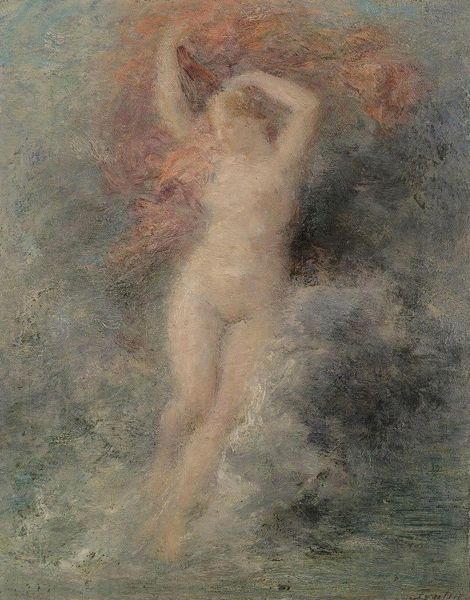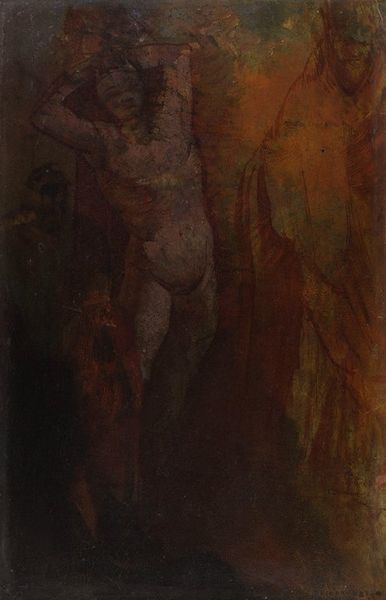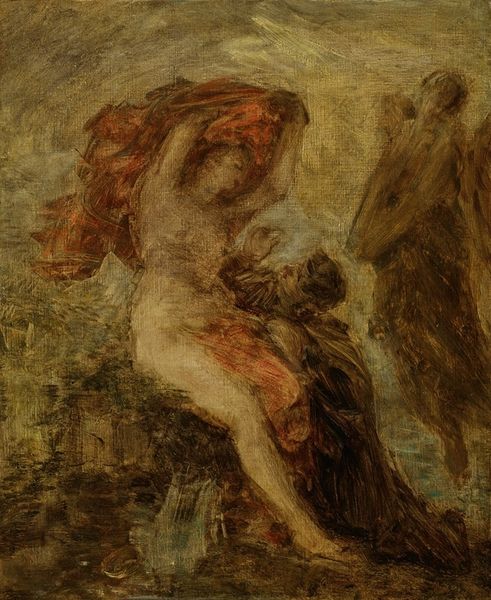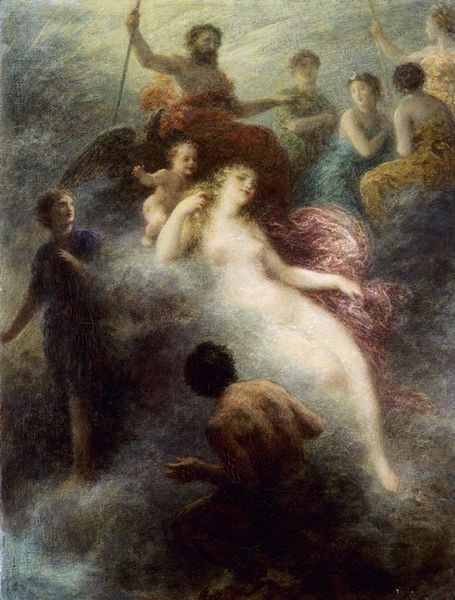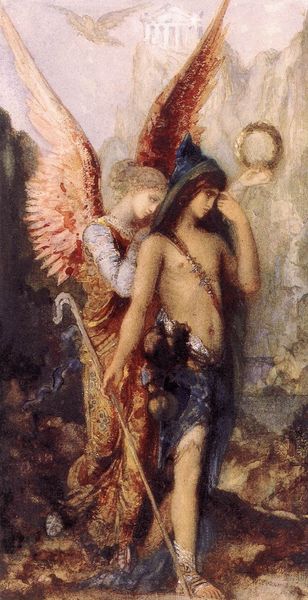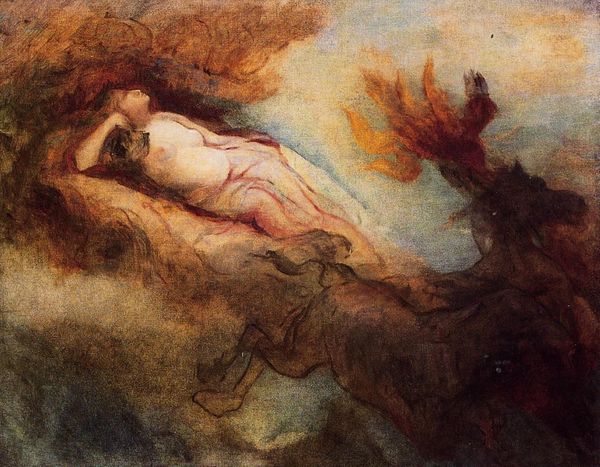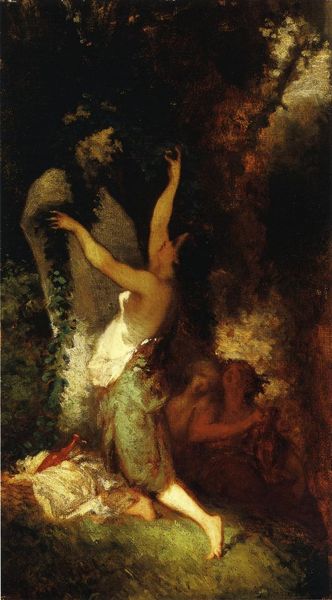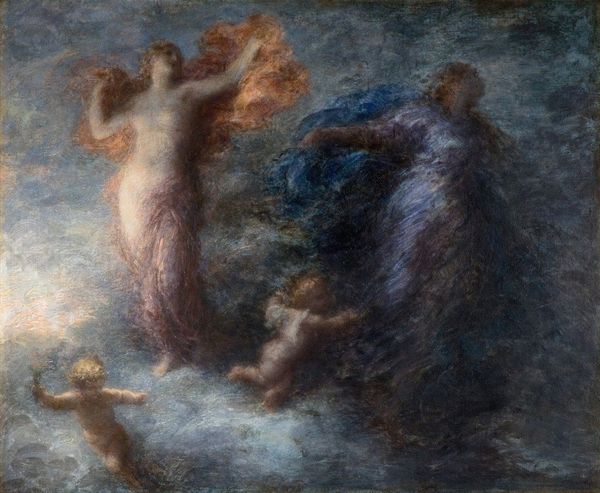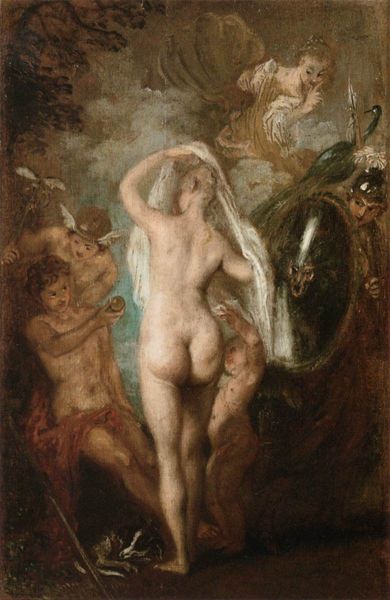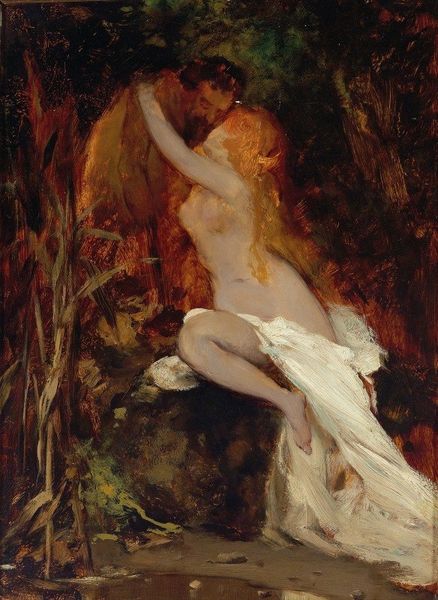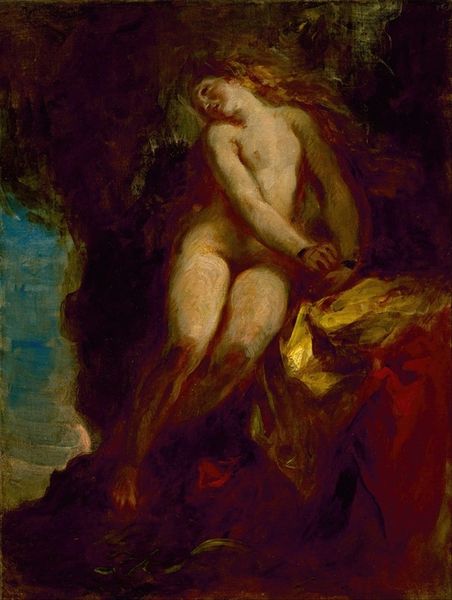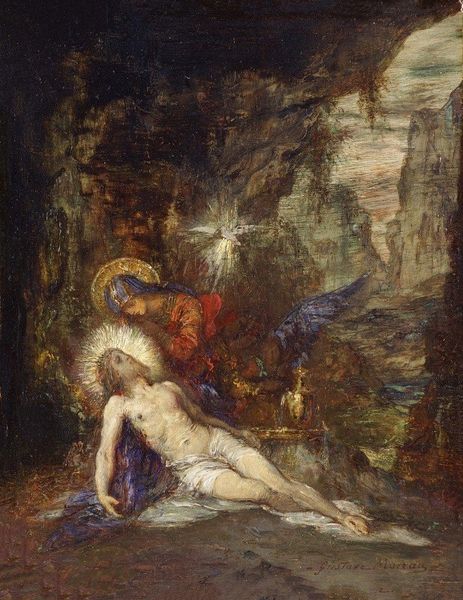
Copyright: Public Domain: Artvee
Henri Fantin-Latour painted "The Palace of Aurora," depicting the goddess of dawn, a subject rich in symbolism. Aurora, often portrayed scattering flowers, here is associated with the dawn, a time of rebirth and renewal. Notice how Fantin-Latour renders Aurora's attendants draping her in fabric. These gestures echo those found in Botticelli’s "Birth of Venus," where attendants clothe the newly born goddess. This motif transcends time, reappearing in various guises across centuries, symbolizing not just divinity but the cyclical nature of time itself. The act of draping, a seemingly simple gesture, resonates with primal significance. Consider how in antiquity, similar gestures were used to indicate status or protection, and think how the subconscious interprets fabric as a comforting, protective layer. This painting, engaging on a deep, subconscious level, allows us to tap into collective memories of rituals and myths. It is a testament to how symbols resurface, evolve, and take on new meanings.
Comments
No comments
Be the first to comment and join the conversation on the ultimate creative platform.
